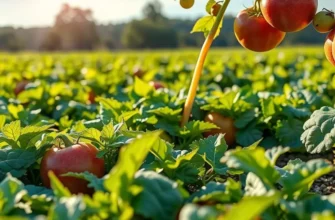Food donation is a powerful way to support those in need and reduce waste. However, ensuring the safety and effectiveness of food donation involves careful planning and management. Understanding how to store food safely, minimize waste, and improve food management practices at home is key to making the most of your contributions.
Safe Food Storage Techniques

Proper food storage is crucial to maintain safety and maximize the lifespan of donations. For perishables like dairy and meat, refrigeration at or below 40°F (4°C) is non-negotiable. This prevents bacterial growth and preserves nutrients. Store these items in airtight containers to maintain humidity levels and avoid cross-contamination.
Fruits and vegetables require tailored storage. Ethylene-producing fruits like apples and bananas should be separated from other produce to prevent premature ripening. Leafy greens thrive when kept in high-humidity drawers, whereas berries last longer when washed only before consumption, keeping them dry to hinder mold growth.
For non-perishables, cool and dry environments are ideal. Avoid direct sunlight which can reduce shelf life and nutritional value. Canned goods, stored at stable temperatures, can last several years, making them perfect for donations. Use a rotation system: older products at the front and newer ones at the back to minimize waste.
Vacuum-sealing is an effective method to extend the life of dried foods and grains. It minimizes exposure to air and moisture, preserving flavor and texture. Moisture control is also essential for cereals and snacks. Storing these items in airtight containers prevents them from going stale and keeps pests away.
Packaging plays a vital role in food safety. Robust, food-grade materials help maintain freshness and prevent spoilage. Labels should clearly indicate expiration dates and potential allergens. For donations, consider ready-to-eat foods like canned soups and pasta that require minimal preparation by recipients.
Eco-smart kitchen tips offer additional strategies for home and donation-oriented food storage. Focus on reuse and recycling to aid both environmental and community health.
Before donating, inspect all food for signs of spoilage or damage. Discard any bulging cans or items with broken seals. Properly stored and prepared donations not only reduce waste but also provide invaluable support to those in need.
Minimizing Food Waste at Home

Reducing food waste at home requires a strategic approach involving meal planning, portioning, and creative usage of food items. Doing so not only aids in minimizing waste but also encourages a more mindful and sustainable lifestyle.
Meal planning is a foundational aspect of waste reduction. Start by mapping out your week’s meals based on what you already have, then make a shopping list of what you need. This avoids buying unnecessary items. Embrace the concept of flexible meal plans to accommodate unexpected changes in schedule without wasting food.
Portion control plays a crucial role in reducing leftovers that might otherwise go to waste. Assess your household’s typical consumption and prepare meals accordingly. Use smaller plates to help serve appropriate portion sizes, making it easier to manage food intake and minimize waste.
Leftovers can be creatively transformed into new dishes, maximizing their use around the kitchen. A roast chicken can be today’s dinner and tomorrow’s chicken salad, and vegetable scraps can become a nutritious broth. Challenge yourself to repurpose leftovers into something appealing rather than discarding them.
Understanding food expiration labels helps prevent premature disposal. “Sell by” dates are more about retailer stock rotation than safety, while “use by” dates indicate the timeframe for the best quality, not strict spoilage. This knowledge can extend the life of foods, allowing you to consume them safely.
Utilize freezer storage effectively to extend shelf life. Properly label and date frozen items to ensure nothing lingers indefinitely, and practice first-in, first-out management. This ensures foods are used while still at their best quality and avoids inadvertent spoilage.
Rotating pantry stocks also reduces food spoilage. Place the newest items at the back and older ones at the front. This simple practice keeps your pantry organized and ensures that all items are used before their prime period passes. Regularly check your pantry’s condition to cull expired or soon-to-spoil products.
Developing an efficient, conscious routine around food management can seem daunting but provides significant rewards. By implementing these strategies, waste is significantly reduced, saving money while contributing to a more sustainable home environment. For further guidance on minimizing waste during food preparation, consider exploring this resource on low-waste cooking techniques.
Final words
Embracing food donation involves understanding best practices for food storage and waste management. By following safe food storage techniques, you can ensure that donated meals are both safe and enjoyable for recipients. Additionally, reducing waste at home not only aids donation efforts but also contributes to a more sustainable environment. Improve your food management habits, and encourage others to do the same through education and active participation in food donation initiatives.







